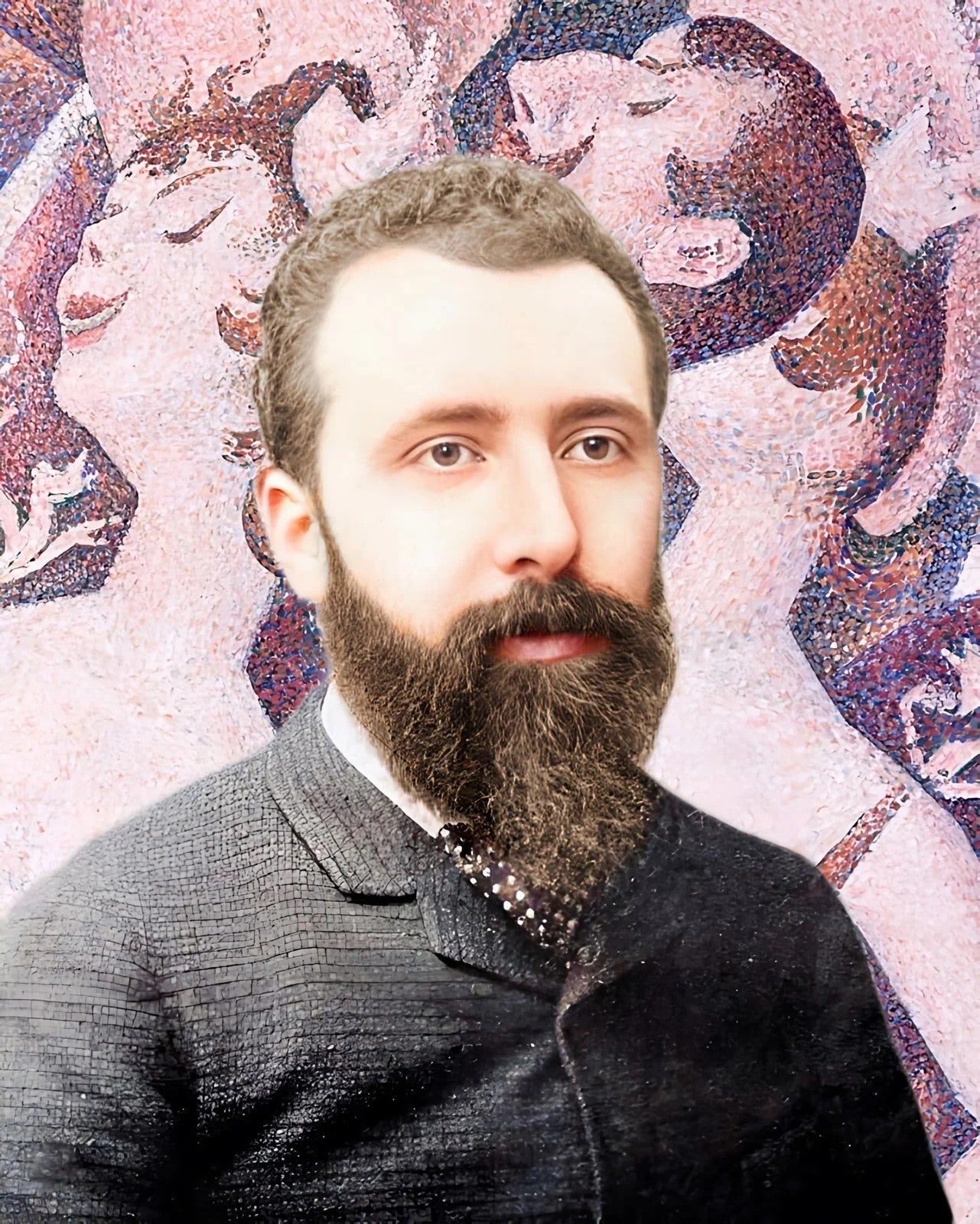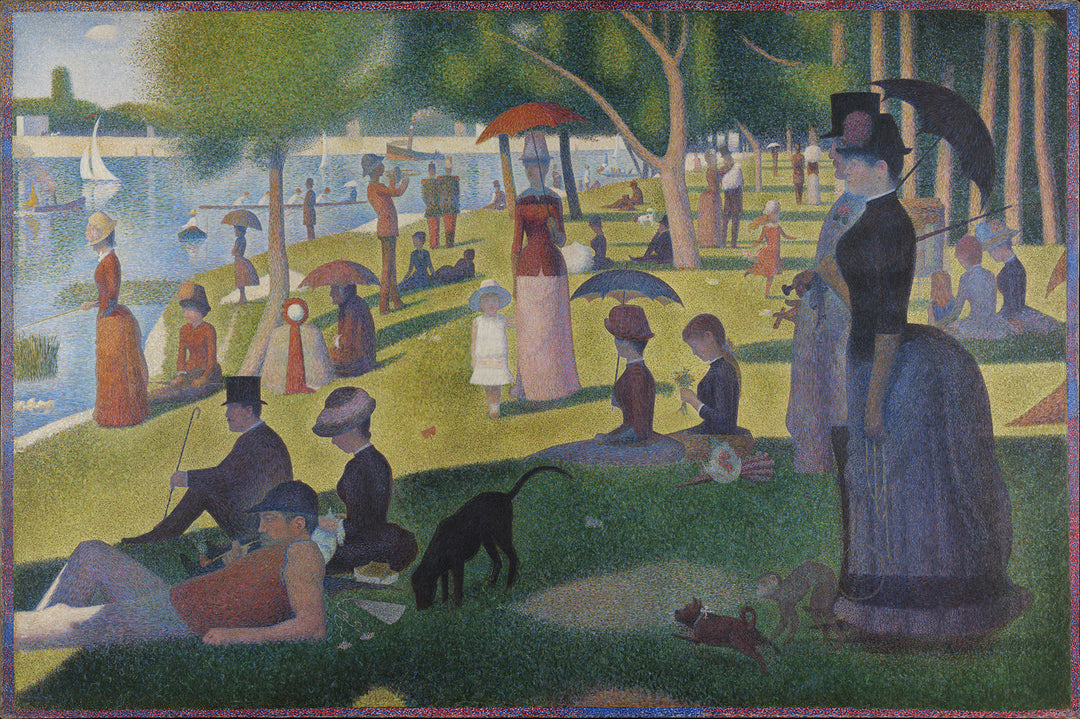
Georges Seurat

Georges-Pierre Seurat was born in Paris, in a modest residence on the former rue de Bondy, near the Boulevard Saint-Martin, in the mid-nineteenth century, into a middle-class family of comfortable means. His father, Antoine Seurat, was a judicial officer and a reserved man, while his mother, Ernestine Faivre, came from a Parisian family with artistic inclinations. The Catholic and traditionally minded family remained united despite the emotional distance that young Georges often maintained from his surroundings. Seurat had two elder sisters, Émile and Marie, with whom he shared a cordial relationship, although from an early age he showed an introspective temperament and a preference for solitude in study. His mother was the figure with whom he maintained the closest bond, encouraging him in his artistic vocation.
From his earliest years, Seurat showed an obsessive interest in drawing and in the observation of natural light. He studied at the École Municipale de Sculpture et Dessin and later entered the École des Beaux-Arts, where he received a classical education based on line, chiaroscuro, and proportion. However, he soon felt constrained by academic rigidity and began to investigate independently the physical and optical principles of color. In those formative years, he rented a small studio in northern Paris, where he spent long days experimenting with the decomposition of light.
At the height of his career, Seurat lived in a studio in the Montmartre district, at 128 Boulevard de Clichy, a place frequented by painters and poets. There he developed the technique that would establish his legacy: Pointillism, a methodical application of pure color dots that, when visually combined, created an unprecedented luminous vibration. In this pursuit, Seurat did not seek to imitate reality but to translate it scientifically, demonstrating that light could be analyzed and reconstructed with mathematical precision. Paul Signac, his friend and later collaborator, adopted and disseminated this technique, profoundly influencing modern art.
Seurat lived with Madeleine Knobloch, a young seamstress who posed for several of his works and with whom he had one child, possibly two, though there is still no certainty regarding the second, who is believed to have been stillborn. Although his private life remained discreet, it is known that the couple shared a quiet domestic existence, removed from the social bustle of Paris. His fatherhood marked a stage of emotional and affective maturity, though his early death cut short that budding family life.
The artist sought a universal visual system in Pointillism—a pictorial language in which emotion and reason could coexist. His research focused on how the retina perceives optical color mixtures rather than relying on the physical blending of pigments. In this way, his work combined the romantic sensitivity inherited from Impressionism with a rational and scientific method, laying the foundations of Neo-Impressionism. Seurat not only painted but also analyzed each brushstroke as an optical experiment, convinced that beauty could arise from order and mathematical precision. Georges-Pierre and Pointillism emerged from Impressionism and, in turn, influenced several later movements, including Cubism and Fauvism.
The life of this Parisian master was brief, yet his legacy endured. His rigorous vision transformed the very notion of modern painting: he turned the canvas into a field of visual inquiry where light, form, and perception merge in an almost musical harmony.
